Romeyn Beck Hough (1857-1924) The American Woods, exhibited by actual specimens and with copious explanatory text. Lowville, New York: by the author, 1888-1904. Volumes I-X only (of 14), 8° (229 x 156mm). Plates and illustrations. 762 samples of wood, each wafer-thin transverse, radial and tangential sections illustrating 254 species, window-mounted in 254 card mounts, a few of the samples laminated between mica sheets, extra-illustrated with 5 loosely inserted veneer samples from the 'Spur Veneer Co' of Boston. (Occasional natural cracking and warping to some samples, plate 25 with some loss to upper sample.) Text in original wrappers, samples on card mounts unbound as issued, each text volume and accompanying samples loose within original brown cloth covers, the covers in matching original cloth slipcases, with metal catches and bosses to covers (Vol.I lacking parts of the clasps, vol.II with parts of clasp detached, vols.VII & X with some damage to spine of slipcase), in five modern brown cloth boxes. A REMARKABLE WORK ON THE WOODS OF AMERICA. A CONTEMPORARY REVIEWER CALLED IT "ONE OF THE MOST MARVELLOUS AND INSTRUCTIVE BOOKS EVER MADE" (Art Education). This unusual work was the lifetime achievement of Romeyn B. Hough, who devoted himself to the study of American trees, and is best known for his Handbook of trees of the northern states and Canada , long a standard reference work in American dendrology. The present much larger work provides a unique record of American wood types, arranged geographically. The age of these specimens gives them great importance from an ecological standpoint, as well as their interest to students of American furniture and woodcrafts. It would not be possible to reproduce the same range of woods today. Parts I-IV cover New York and adjacent states, part V covers Florida, parts VI-X describe the Pacific Slope. Of the parts not present here parts XI-XII covered the Atlantic states, and part XIII southern Florida. Part XIV contained a continuation of the work on the trees of Florida with text by Marjorie Hough, using specimens and notes prepared by her father before his death in 1924. Hough explained the unique nature of his works: they are "illustrated by actual specimens, and being in this way an exhibition of nature itself it possesses a peculiar and great interest never found in a press-printed book. The specimens are... about 2 x 5 in. in size, and sufficiently thin to admit of examination in transmitted light... Looked at in reflected light they appear as in the board or log... These specimens are mounted in durable frame-like bristol-board pages, with black waterproofed surfaces... and each bears printed in gold-bronze the technical name of the species and its English, German, French and Spanish names. The pages are separable... and are accompanied with a full text... giving information as to the uses and physical properties of the woods, and distributions, habits of growth, botanical characters, habitats, medicinal properties, etc., of the trees... The woods used for the specimens are personally collected by the author... and are sectioned and prepared by a process of his own device". Despite announcing that the work was to be completed in 15 volumes, neither the 14th or 15th volume appeared during Hough's lifetime. The very rare final 14th volume was issued in 1928 by Hough's daughter but is usually missing due to the long delay in its publication: only two complete sets are recorded as having been sold at auction in the past 25 years. The volumes were priced at five dollars each, a high price reflecting the work involved in assembling them. Since subscribers came and went over the 25-year period of publication, and many only bought the volumes on the areas that interested them, very few complete sets were assembled. Its rarity can be gauged from the fact that Stafleu and Cowan record the work as being complete in 6 volumes. BM(NH) II, p.880 (pts.I-VIII only); cf. Stafleu and Cowan II
Romeyn Beck Hough (1857-1924) The American Woods, exhibited by actual specimens and with copious explanatory text. Lowville, New York: by the author, 1888-1904. Volumes I-X only (of 14), 8° (229 x 156mm). Plates and illustrations. 762 samples of wood, each wafer-thin transverse, radial and tangential sections illustrating 254 species, window-mounted in 254 card mounts, a few of the samples laminated between mica sheets, extra-illustrated with 5 loosely inserted veneer samples from the 'Spur Veneer Co' of Boston. (Occasional natural cracking and warping to some samples, plate 25 with some loss to upper sample.) Text in original wrappers, samples on card mounts unbound as issued, each text volume and accompanying samples loose within original brown cloth covers, the covers in matching original cloth slipcases, with metal catches and bosses to covers (Vol.I lacking parts of the clasps, vol.II with parts of clasp detached, vols.VII & X with some damage to spine of slipcase), in five modern brown cloth boxes. A REMARKABLE WORK ON THE WOODS OF AMERICA. A CONTEMPORARY REVIEWER CALLED IT "ONE OF THE MOST MARVELLOUS AND INSTRUCTIVE BOOKS EVER MADE" (Art Education). This unusual work was the lifetime achievement of Romeyn B. Hough, who devoted himself to the study of American trees, and is best known for his Handbook of trees of the northern states and Canada , long a standard reference work in American dendrology. The present much larger work provides a unique record of American wood types, arranged geographically. The age of these specimens gives them great importance from an ecological standpoint, as well as their interest to students of American furniture and woodcrafts. It would not be possible to reproduce the same range of woods today. Parts I-IV cover New York and adjacent states, part V covers Florida, parts VI-X describe the Pacific Slope. Of the parts not present here parts XI-XII covered the Atlantic states, and part XIII southern Florida. Part XIV contained a continuation of the work on the trees of Florida with text by Marjorie Hough, using specimens and notes prepared by her father before his death in 1924. Hough explained the unique nature of his works: they are "illustrated by actual specimens, and being in this way an exhibition of nature itself it possesses a peculiar and great interest never found in a press-printed book. The specimens are... about 2 x 5 in. in size, and sufficiently thin to admit of examination in transmitted light... Looked at in reflected light they appear as in the board or log... These specimens are mounted in durable frame-like bristol-board pages, with black waterproofed surfaces... and each bears printed in gold-bronze the technical name of the species and its English, German, French and Spanish names. The pages are separable... and are accompanied with a full text... giving information as to the uses and physical properties of the woods, and distributions, habits of growth, botanical characters, habitats, medicinal properties, etc., of the trees... The woods used for the specimens are personally collected by the author... and are sectioned and prepared by a process of his own device". Despite announcing that the work was to be completed in 15 volumes, neither the 14th or 15th volume appeared during Hough's lifetime. The very rare final 14th volume was issued in 1928 by Hough's daughter but is usually missing due to the long delay in its publication: only two complete sets are recorded as having been sold at auction in the past 25 years. The volumes were priced at five dollars each, a high price reflecting the work involved in assembling them. Since subscribers came and went over the 25-year period of publication, and many only bought the volumes on the areas that interested them, very few complete sets were assembled. Its rarity can be gauged from the fact that Stafleu and Cowan record the work as being complete in 6 volumes. BM(NH) II, p.880 (pts.I-VIII only); cf. Stafleu and Cowan II


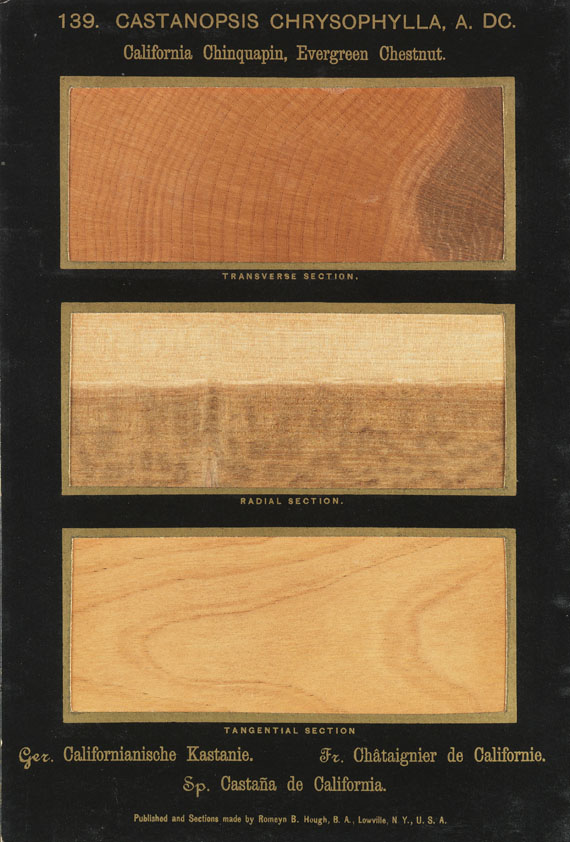
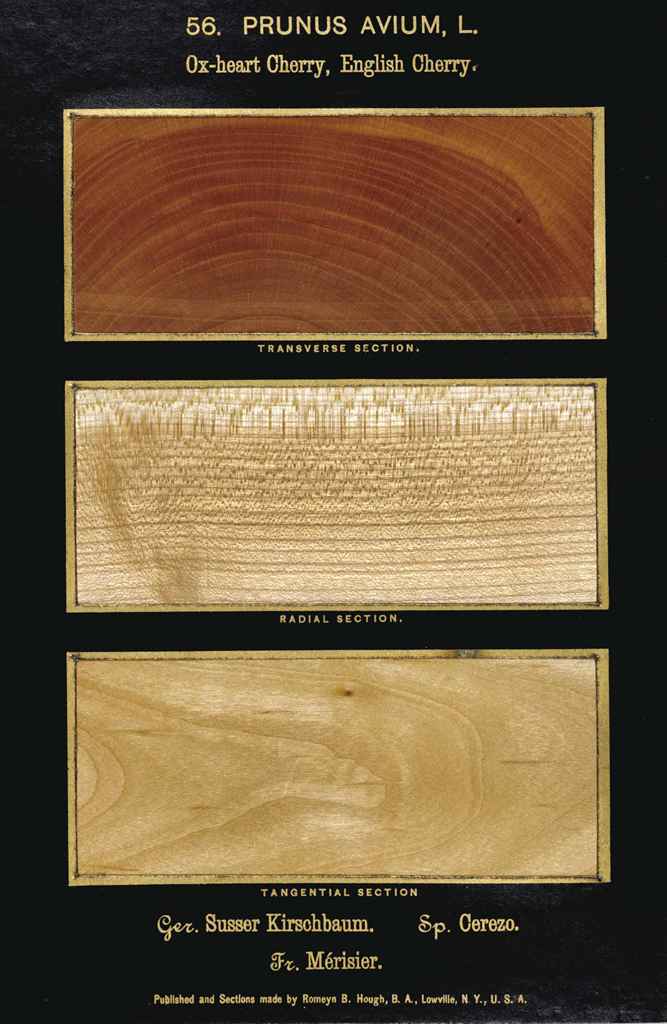
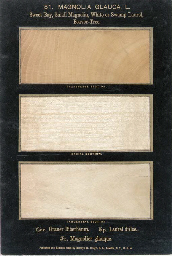





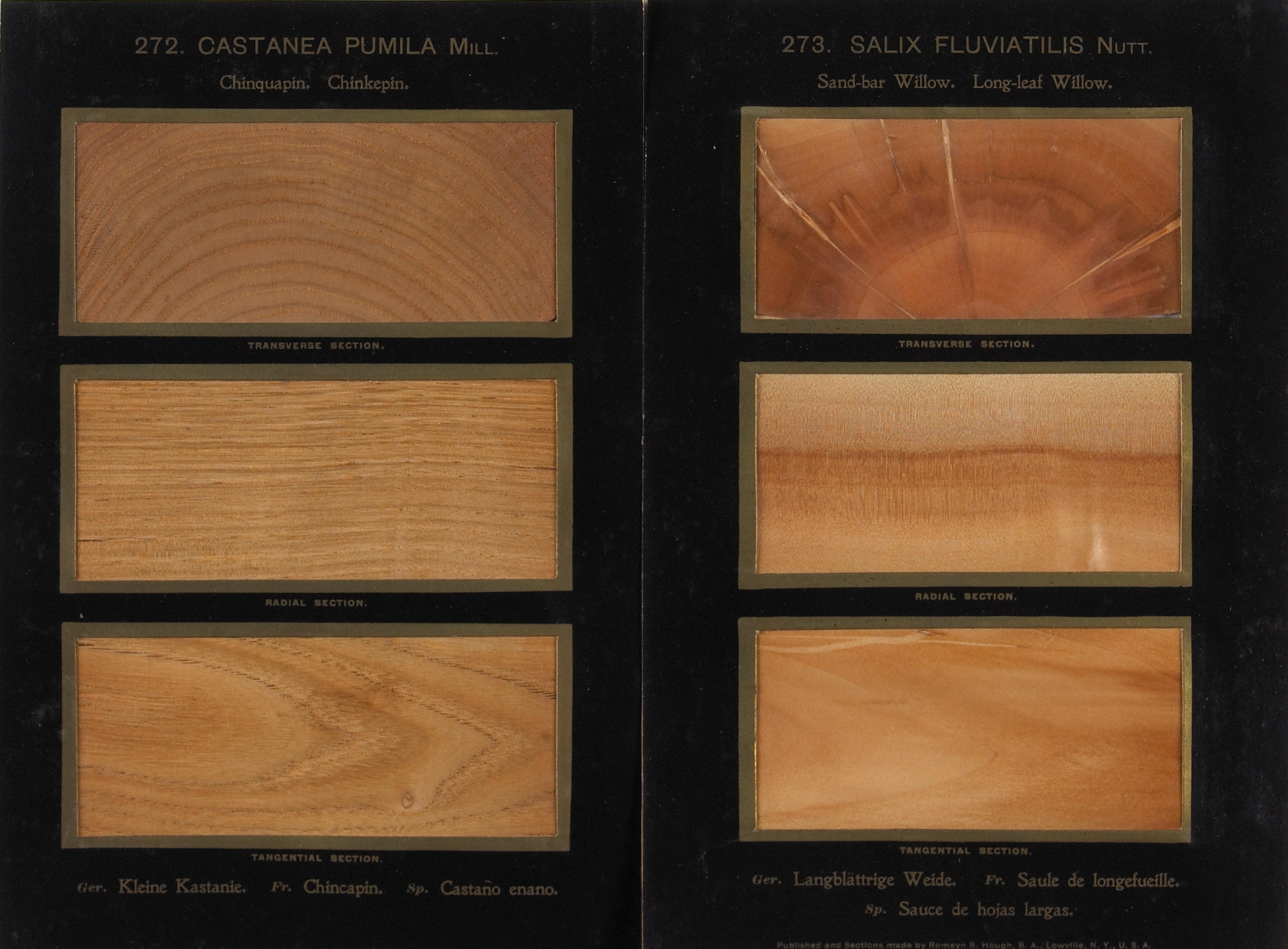
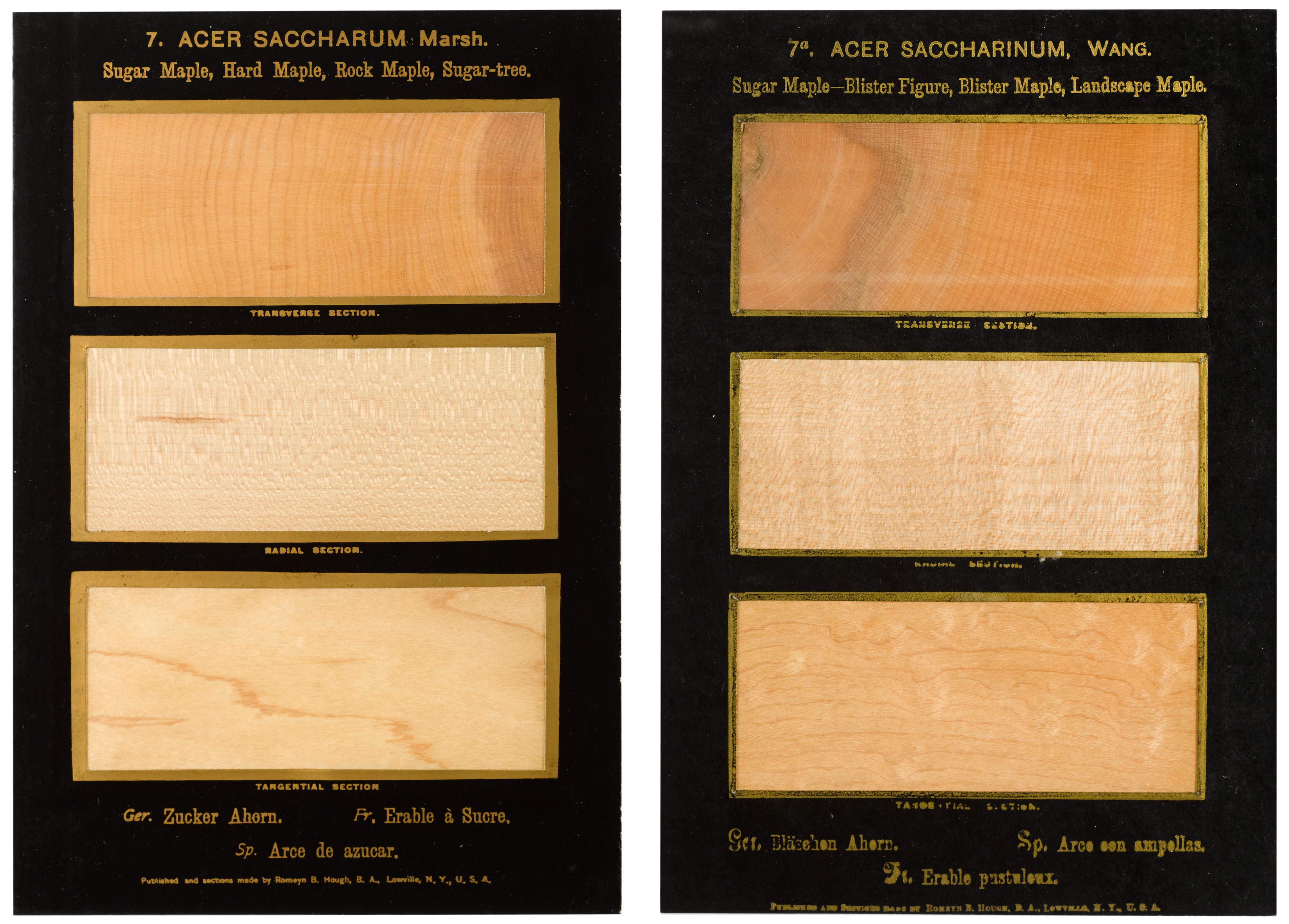
Testen Sie LotSearch und seine Premium-Features 7 Tage - ohne Kosten!
Lassen Sie sich automatisch über neue Objekte in kommenden Auktionen benachrichtigen.
Suchauftrag anlegen